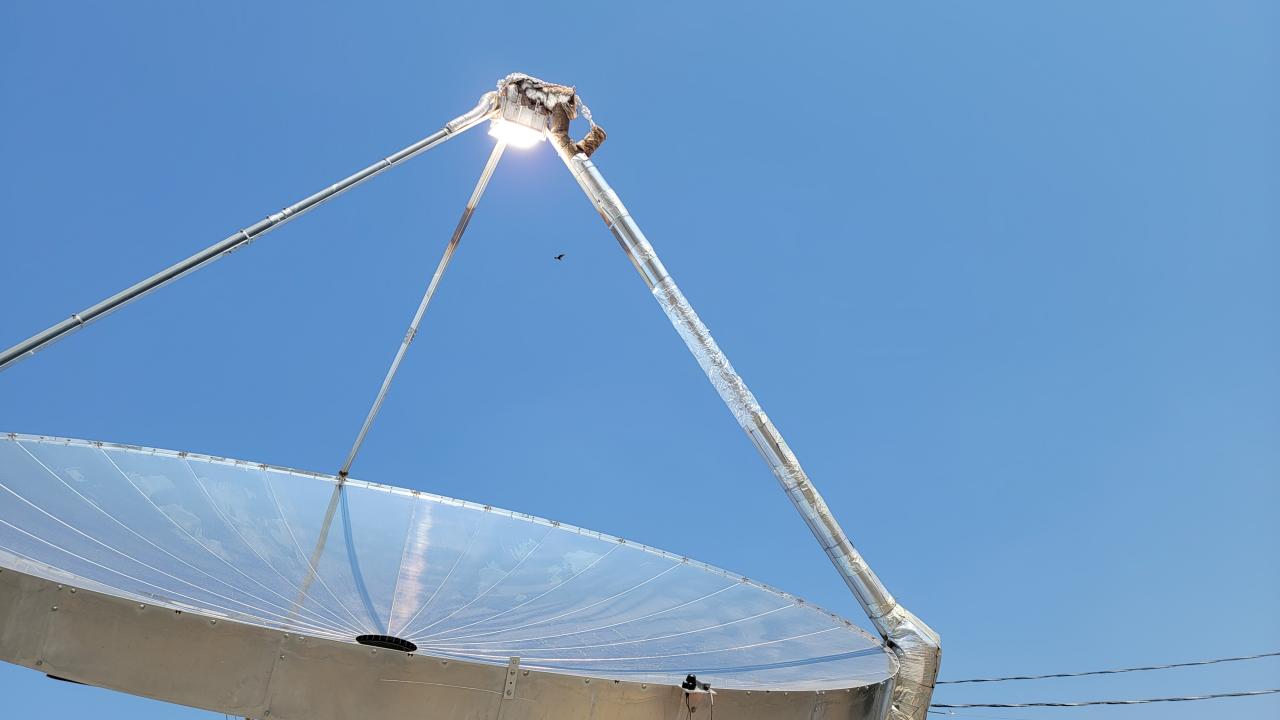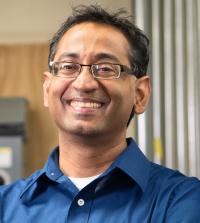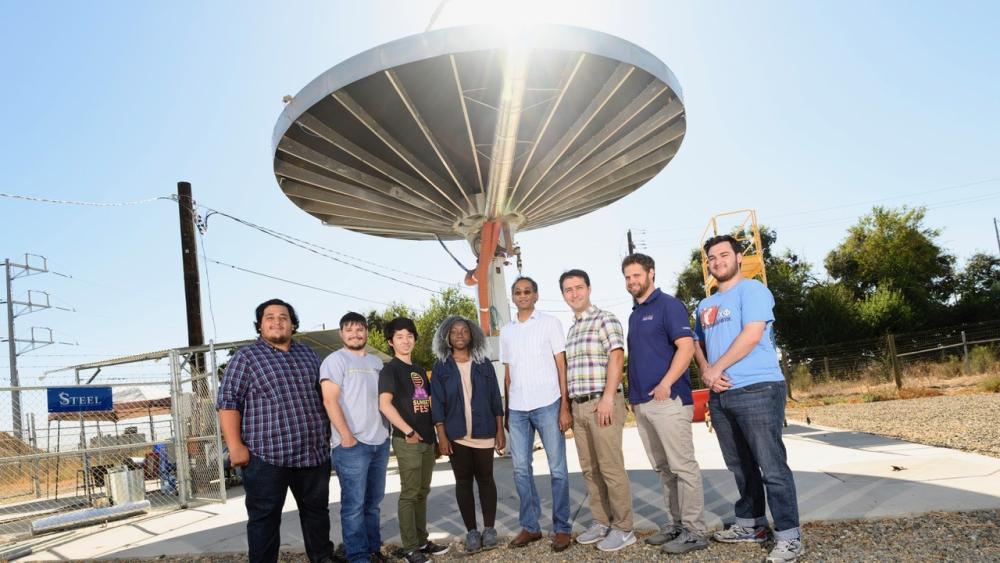
Vinod Narayanan Selected for $4.6M Department of Energy Grant
Harnessing energy from the sun is key to a decarbonized world, which is why it’s the focus of a new three-year, $4.6 million, multi-institution project funded by the U.S. Department of Energy (DOE) and led by Mechanical and Aerospace Engineering Professor Vinod Narayanan.

Several industrial processes require medium- to high-temperature heat, most of which is generated by burning fossil fuels and creates a huge carbon footprint. If researchers like Narayanan can develop green alternatives like solar-thermal power, he thinks they can play a big role in decarbonizing industry.
“Decarbonization of the industry is the biggest challenge right now,” he said. “You can decarbonize transportation with batteries and you can decarbonize buildings with electrification, but if you want to go to those higher temperatures needed in industry, you need to either use electricity from renewables or high-temperature solar energy.”
Concentrating Solar-Thermal Power
There are two ways to capture energy from the sun: using traditional solar cells, known as photovoltaics, and concentrating solar-thermal energy. Solar-thermal energy uses mirrors to concentrate sunlight onto a receiver, which transfers the energy to a high-temperature working fluid that can generate process heat or run a power cycle. This method can be coupled with less-expensive thermal storage to provide electricity or process heat even at night and is ideal for locations that get a lot of direct sunlight like the Southwestern U.S., Middle East, Northern Africa and Southern Europe.
In the new project, Narayanan and his team will develop 3D-printed high-temperature, high-pressure receivers that can be used to generate power or for renewable industrial process heat. His collaborators include four other universities—Carnegie Mellon University, Pennsylvania State University, the University of Michigan and Utah State University—three companies—Sunvapor Inc., Materials Resources LLC, and AMETEK Specialty Metal Products—and Sandia National Laboratories.
To build a receiver, the team needs something that can withstand extremely high temperatures and pressures, as well as the extreme flux and transients that come as the sun rises and sets every day. They also need a receiver that transfers as much energy as possible to a working fluid.
“You can think about taking sunlight you receive on a summer day and concentrating that 1000 times,” said Narayanan. “If you focus it onto an area of a few inches and you don’t have a mechanism to remove the heat, you can burn through steel. The point of the receiver is to take that heat and transfer it to a working fluid that can do something with that heat—either process heating or power generation.”

The Power of Additive Manufacturing
Making a receiver with metal additive manufacturing is a key component of the project. Because it gets so hot, Narayanan says traditional etching, diffusion and bonding techniques weren’t holding up on previous designs, and the devices would often fail or quickly degrade. Additive manufacturing, commonly known as 3D printing, is a potential solution.
“With additive manufacturing, you can build everything in one go so that you don’t have to do things like welding or brazing to build the component,” said Narayanan. “It also helps you in terms of the longevity, the creep and the fatigue of the receiver, so you’re restricting the amount of failure points.”
“Additive manufacturing allows for freedom of design, use of advanced materials, part consolidation and rapid turn-around from design to net-shape fabrication, in addition to heat exchangers that are ready to test with minimal additional post-processing,” added Tony Rollett, Carnegie Mellon University’s PI for the project.
The project builds upon two previous DOE-funded projects: one with Carnegie Mellon University, where the team developed an additively-manufactured heat exchanger, and another with Oregon State University, where the team worked to miniaturize solar-thermal receiver technology and tested it at the 7m solar dish at the Western Cooling Efficiency Center. Now, Narayanan hopes to combine these ideas to create a next-generation receiver.
If successful, he hopes to partner with his colleagues in the College of Engineering to couple his receiver with new thermal storage methods to further decarbonize industry and make these methods viable to industry in new parts of the world.
“What I’m looking forward to most is creating this additively-manufactured part, exposing it to concentrated sunlight and seeing it work as we planned, with no leaks or failures,” he said. “I think we will get there.”
The project is funded by the U.S. Department of Energy Solar Energy Technologies Office (SETO). SETO supports solar energy research, development, demonstration and technical assistance to improve the affordability, reliability, and domestic benefit of solar technologies on the electric grid. Learn more at energy.gov/eere/solar
